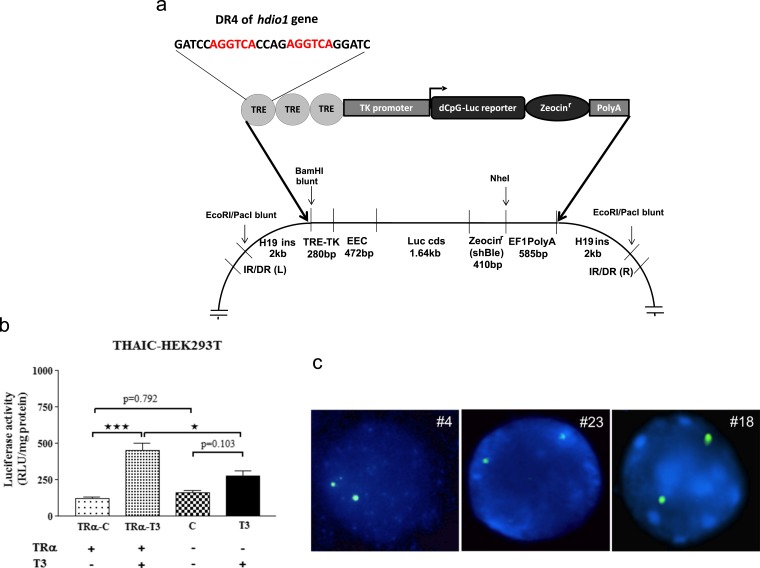Figure 1.
(a) The recombinant THAIC. (Lower) The structure of the targeting construct generated in the pt2-BH vector. The coding sequence encodes luciferase (62 kDa) fused to ShBle (14 kDa), allowing selection based on resistance to zeocin. (b) THAIC responds to T3 in a TR-dependent manner. The THAIC was stably expressed in human embryonic kidney (HEK)293T cells using Sleeping Beauty–mediated recombination followed by zeocin selection. TRα was transiently transfected, and THAIC-HEK293T cells were treated with 100 nM T3 for 24 hours. Means ± SEM; (n = 3). *P < 0.05, ***P < 0.001 by one-way analysis of variance (ANOVA), followed by Tukey post hoc test. (c) Fluorescence in situ hybridization (FISH) on homozygote THAI mouse, lines 4, 23, and 18. Hybridization with the green-colored dCpG luciferase-specific probe shows two equal-sized signals in interphase cells of homozygous animals, demonstrating the presence of two copies of the transgene in lymphocyte cultures of all three lines, indicating that a single copy was inserted into the genome of founders. C, control; EEC, expression enhancer cassette; luciferase reporter-zeocin sequences encoding a luciferase/zeocin resistance fusion protein, IR/DR (L) and (R), inverted repeat left and right; TK promoter, thymidine kinase minimal promoter.

